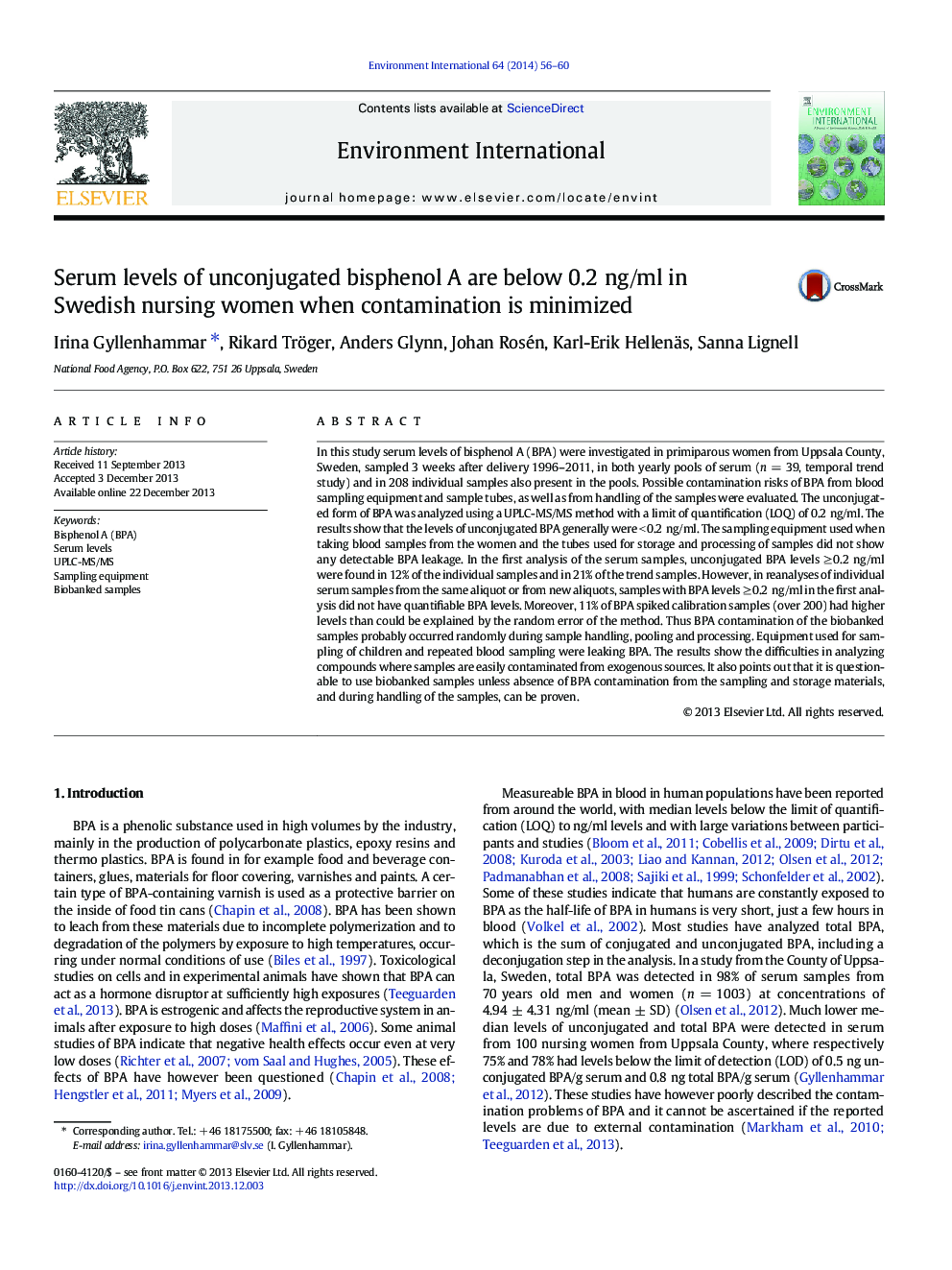| کد مقاله | کد نشریه | سال انتشار | مقاله انگلیسی | نسخه تمام متن |
|---|---|---|---|---|
| 4422788 | 1619064 | 2014 | 5 صفحه PDF | دانلود رایگان |

• The results show that the levels of free BPA generally were < 0.2 ng/ml.
• Contamination of samples during processing was evident, but corrected for by repeat analysis.
• The sampling equipment used when taking blood samples from the women did not show any detectable BPA leakage.
• Equipment used for blood sampling in children and for repeated blood sampling were leaking BPA.
• The results points out that it is questionable to use biobanked samples unless absence of BPA contamination can be proven.
In this study serum levels of bisphenol A (BPA) were investigated in primiparous women from Uppsala County, Sweden, sampled 3 weeks after delivery 1996–2011, in both yearly pools of serum (n = 39, temporal trend study) and in 208 individual samples also present in the pools. Possible contamination risks of BPA from blood sampling equipment and sample tubes, as well as from handling of the samples were evaluated. The unconjugated form of BPA was analyzed using a UPLC-MS/MS method with a limit of quantification (LOQ) of 0.2 ng/ml. The results show that the levels of unconjugated BPA generally were < 0.2 ng/ml. The sampling equipment used when taking blood samples from the women and the tubes used for storage and processing of samples did not show any detectable BPA leakage. In the first analysis of the serum samples, unconjugated BPA levels ≥ 0.2 ng/ml were found in 12% of the individual samples and in 21% of the trend samples. However, in reanalyses of individual serum samples from the same aliquot or from new aliquots, samples with BPA levels ≥ 0.2 ng/ml in the first analysis did not have quantifiable BPA levels. Moreover, 11% of BPA spiked calibration samples (over 200) had higher levels than could be explained by the random error of the method. Thus BPA contamination of the biobanked samples probably occurred randomly during sample handling, pooling and processing. Equipment used for sampling of children and repeated blood sampling were leaking BPA. The results show the difficulties in analyzing compounds where samples are easily contaminated from exogenous sources. It also points out that it is questionable to use biobanked samples unless absence of BPA contamination from the sampling and storage materials, and during handling of the samples, can be proven.
Journal: Environment International - Volume 64, March 2014, Pages 56–60